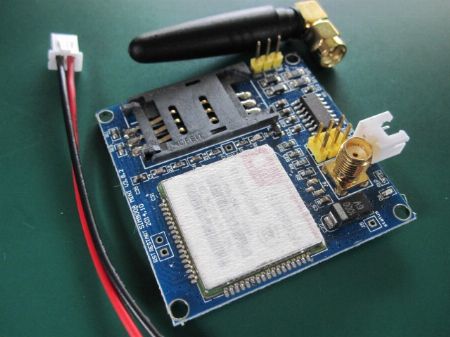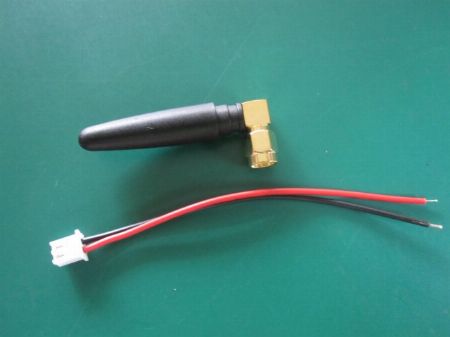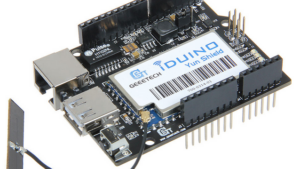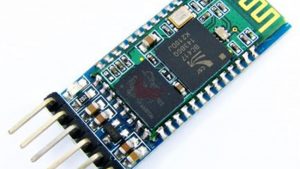Description
This SIM900/A V3.8.2 module has a set of TTL level serial interface, a set of RS232 level serial interface, a set of power supply interface.
Basic features
Arduino 51 STM32 AVR MCU compatible
Prototype expand
The dual frequency 900/ 1800 MHz, GPRS multi-slot class 10/8,GPRS mobile station class B
Power supply range: voltage is 4.6-5.2v; current is 1A or more(the current is very important).
Low power consume: 1.5mA (sleep mode)
Operating temperature range: -40 degrees C to +85 C
Communication interface: The TTL level serial interface compatible 2.85 3.3 5v MCU
Size:49*50mm
Getting started with the MINI V3.8.2 Wireless Data Transmission Extension Module GSM-GPRS SIM900A
In this Tutorials we are going to deal with GSM SIM900A (MINI V3.9.2) this is simple and easy to connect with Arduino.
Step1: Hardware required
In this tutorial, you will need :
1. GSM SIM900A (MINI V3.9.2)
2. Arduino Uno Board
3. Jumper Wire
4. Power adapter 5V
5. SIM card
Step2: Connecting the Hardware
Connect the GSM SIM900A (MINI V3.9.2) to the arduino UNO as shown below,

1. Insert your SIM card to GSM module and lock it.
2. power up your gsm by connecting it to Arduino’s 5V and GND.
3. Connect the Antenna.
4. Now wait for some time (say 1 minute) and see the blinking rate of ‘status LED’ or ‘network LED’ //GSM module will take some time to establish connection with mobile network//
5. Once the connection is established successfully, the status/network LED will blink continuously every 3 seconds. You may try making a call to the mobile number of the sim card inside GSM module. If you hear a ring back, the gsm module has successfully established network connection.
6.You can see a TTL pin with 3VR, 3VT, 5Vr, 5VT, VCC and GND on your sim900a near your power supply pin. You have to connect GSM’s 5VT to Arduino D9 and GSM’s 5VR to Arduino’s D10 for serial communication between arduino and sim900a module.
Step3: Setting up the library
SoftwareSerial is a library of Arduino which enables serial data communication through other digital pins of Arduino. The library replicates hardware functions and handles the task of serial communication. To be able to interface gsm module with arduino, you will have to download this library and extract it into your Arduino’s libraries.
Step4: Upload the sample sketch
Download the sample source code below and open it on your Arduino IDE. Select the correct board and port and upload it into your Arduino Uno Board.
Step5: Testing the circuit
After you has succesfully uploaded your source code, open your serial monitor. Serial monitor will display as shown in the picture below.


1. As you key-in c : to make a call, gsm will read the ATD command and make a call to a phone number you have upload in your source code.
2. When you key-in h : to disconnect/hangup call, gsm will read the ATH command and disconnect the connection.
3. When you key-in e : to redial, gsm will read the ATDL command and redialing previous number it has called.
4. When there is an incoming call, you can see RING printed on serial monitor and you can click i : to receive a call and GSM’s ATA command will be carried out and you will be connected to a call connection.





